Destinations & Things To Do
Bangkok continues to strengthen its reputation as a top tourist destination
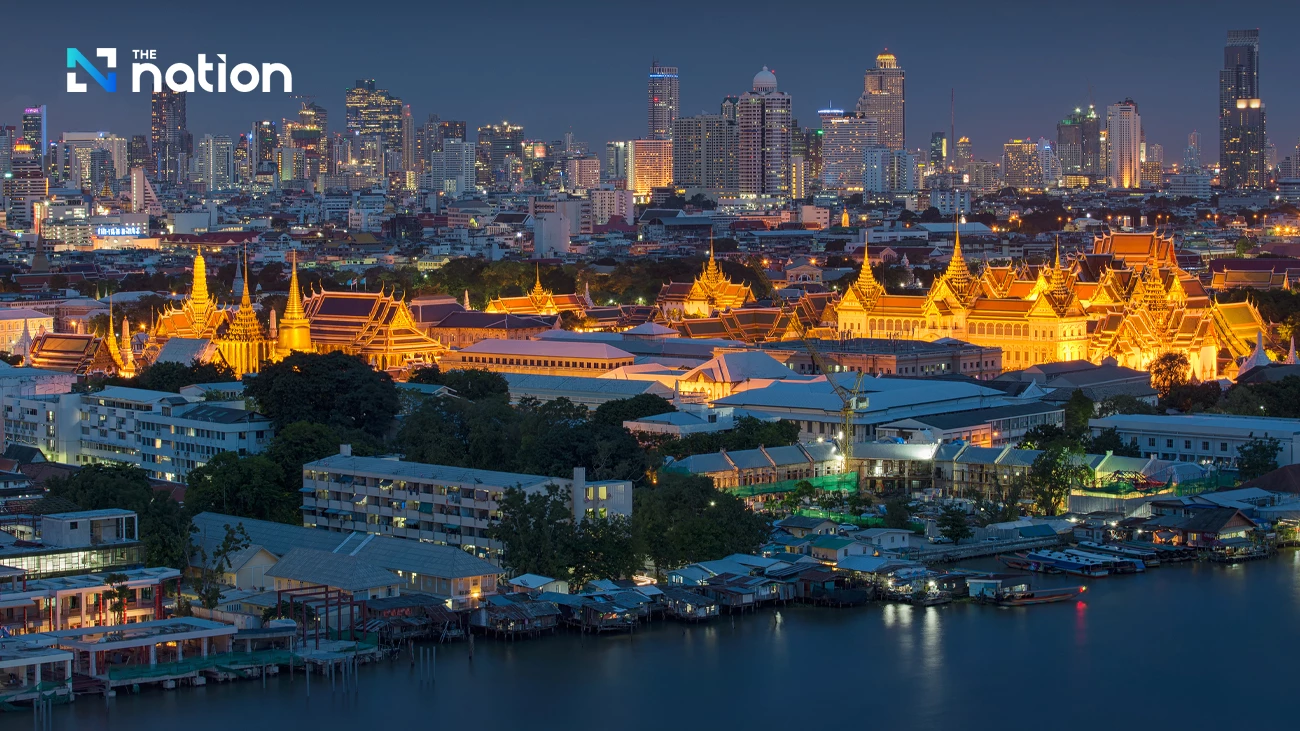
The campaign targets key markets including India, China, Malaysia, Laos, and Vietnam, offering special deals on accommodation, travel packages, and shopping, alongside promoting emerging tourism trends such as wellness travel, music festivals, sports, and international events.
“The government reaffirms Thailand’s readiness as a world-class destination, offering safety, service excellence, and unique charm, while continuing to strengthen the tourism sector for sustainable growth,” Sasikarn said.
Destinations & Things To Do
Maine On the Brain – The Trek
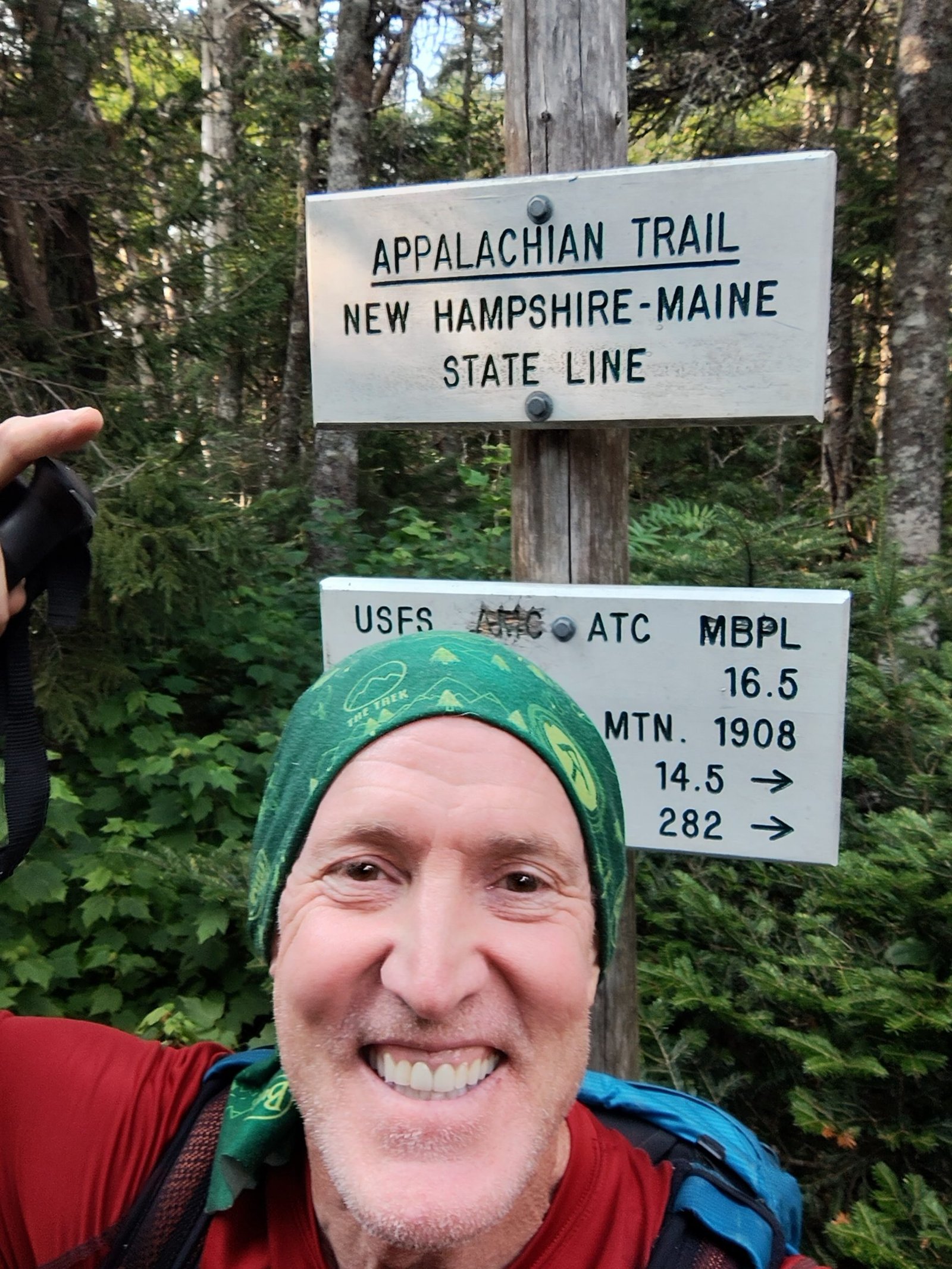
Day 108- 18 Miles today from Barn Hostel Gorham to Carlo Col Shelter, 6400 Feet Up, 4500 Feet down, 1917 AT Mile Marker
Knockerz Visits Boulder Hell
This is actually more than one day. The day after I finished Carter Moriah range I took Knockerz back to the Great Gulf Bypass up to the Osgood campsite and then to the Alpine zone heading towards Madison Hut.
I wanted her to experience the climb up to the Alpine zone. I also really wanted to show her the Alpine zone and the bouldering that was required to get through Madison Hut all the way to Mount Washington. The day I did that was my most difficult day yet.
It was my “zero” day but we still did the climb up to the Alpine zone and back down yesterday which was about 10 miles and 3300 feet elevation gain. I’m glad that I was able to let knockers see what it was like up there.
We then went to the brewery and strategized for the upcoming few days.
The Next Day
I started off this morning at 6:30 with a goal of getting to at least Gentian Pond shelter. I would really like to go farther than that but the elevation my be way too much at over 6,000 feet of climbing and over 4,000 feet of descent over 18 miles. But that would put me in a good spot to hit the Notch the following day.
It’s a cold morning with temperatures probably in the 40s. It wasn’t long before I got to the Mahoosic trail. It took me about an hour and a half to go 3 miles with 1800 ft of elevation. This is fast for me especially after the slowness of the Whites.
The trail is very well marked with lots of white blazes everywhere. I have to say it feels really good to look at this view and see Mount Washington off in the distance behind me and know I’m through the Whites.
“Normal” AT Trail
Today’s hike so far has been a “normal” hike. There were a few small climbs in addition to the overall climb but nothing technical yet. The technical stuff is what really slows you down. And that’s the thing about the Whites it is the technical climbs that drop your daily miles down.
I know it’s going to be technical going through Mahoosic Notch and I know Southern Maine has a lot of elevation. But you don’t hear people talk about Southern Maine in a fear mongering way.
It may be because we Nobos are just recently out of the Whites and this feels refreshing to have normal trail again.
Do I Push My Miles Today?
I think there is a technical climb if I make it to the shelter that is 16 miles in. The woods are really quiet I don’t hear any birds or squirrels or anything. I also have not run into a single individual yet.
I’m expecting to see some Sobos pass by me at some point today. I don’t think any Nobos will pass me because my pace is a pretty strong pace right now.
Reflection
With “normal” trail my mind can wander again because I’m not having to put all my mental energy into the obstacles of a technical trail so I just noticed something. I have always lived my life planning ahead.
It’s been my brain’s way of having some predictability on the future. I think uncertainty bothers me.
I know it was a trait my Mother had. She was always planning ahead and living for the future. The future has not yet come.
And in retirement one of the things I wanted to do was to help myself cure from always planning ahead. There is no need for me to plan career moves or things at work anymore. I can now just live life.
I really wanted to have this AT adventure to help me to process my mind’s desire to always plan ahead and be ready for the future.
And now I’ve noticed that I’m not planning ahead. I did take a peek the other day and I know it is a handful of miles, maybe two days, before I will be out of New Hampshire. But I haven’t planned too far ahead. It is nice to be able just to walk and have a destination but if I get to that destination great and if not there is always tomorrow.
It may be that there was a technical section or bouldering or something else that I didn’t anticipate that will hold me back from my chosen destination for that day but I will be able to attack it tomorrow.
This is similar to life. I hope this is a philosophy I can continue after this adventure. This is a 2200 mile hike but in reality it’s 2,200- 1 mile hikes. I can start my day off with a destination in mind and then take one step at a time towards that destination.
This was especially true during the very challenging times in the Whites like the boulder fields leaving Mount Madison. I just kept telling myself one step at a time. I had broken my hike up into 2 foot intervals at that point. This too is similar to life when you have extremely difficult times and you think you just can’t go on but you break it up into smaller manageable pieces and you move forward.
There is really no need to plan too many days in advance because the plans rarely work out as expected. This is one of the main lessons I really wanted to take away from this hike. Try to live my life more in the present.
Too Early to Stop Hiking Today
The climb up to the ledges was steep, short, but not too technical. I could see a great view of Mount Washington. Mount Washington is getting further and further behind me now and I was still making great time knocking out miles today.
By 11:00 I had done over 8 miles and over 3,000 feet of climbing.
It was only about 3 more miles to the Gentian Pond shelter. So I knew I needed to continue on. My goal now is to get up over Mount Success and then into Maine. That will set me up with about 6 miles in the morning before the Notch. And then 15 miles overall to the road where I plan to meet Knockerz.
Reroute!
There was a beautiful brand new reroute around Dream pond. According to the comments the old AT was a bog that was very hard to get through.
The reroute was a nice unobstructed dirt path. I haven’t seen the trail like this in a long time. It was unmarked as far as white blazes but very it was very well traveled.
I continued to travel on past Gentian Pond shelter where there were a couple of pretty ponds. I was still traveling pretty fast with a little bit of technical trail to navigate but not too bad.
Maine Ahead!
Then I got to the bottom of Mount Success and I could see how much climbing I had ahead to the top. It was a bit overwhelming when I could just call it a day at Gentian Pond. I was starting to get tired.
I had to climb a thousand feet up Mount Success. There were some technical sections on the climb that slowed me down. After Mount Success I was in an Alpine zone heading towards the border with Maine.
Up on Mount success in the Alpine zone the trees were just a couple feet tall and it was a boggy area with bog boards to walk on. The trail then became technical. There was a steep incline to climb that somebody had put a rope up to help you climb up that section.
Home Finally
After crossing the border into Maine I got a taste of Mahoosic Notch. There were some very steep technical climbs and descents. Several of these left me sitting for a moment uncertain which direction to go. I was tired and the climbing was deadly. It was that bad. One wrong move and you would slip and probably die. These were stow your poles kinds of climbs with your face to the wall climbing down and up.
It was slow going but I finally made it to the Carlo Col shelter. I couldn’t believe I did such a big day today. This is the most I’ve ever done in elevation gain in one day.
This website contains affiliate links, which means The Trek may receive a percentage of any product or service you purchase using the links in the articles or advertisements. The buyer pays the same price as they would otherwise, and your purchase helps to support The Trek’s ongoing goal to serve you quality backpacking advice and information. Thanks for your support!
To learn more, please visit the About This Site page.
Destinations & Things To Do
Europe’s hidden gem not so hidden anymore
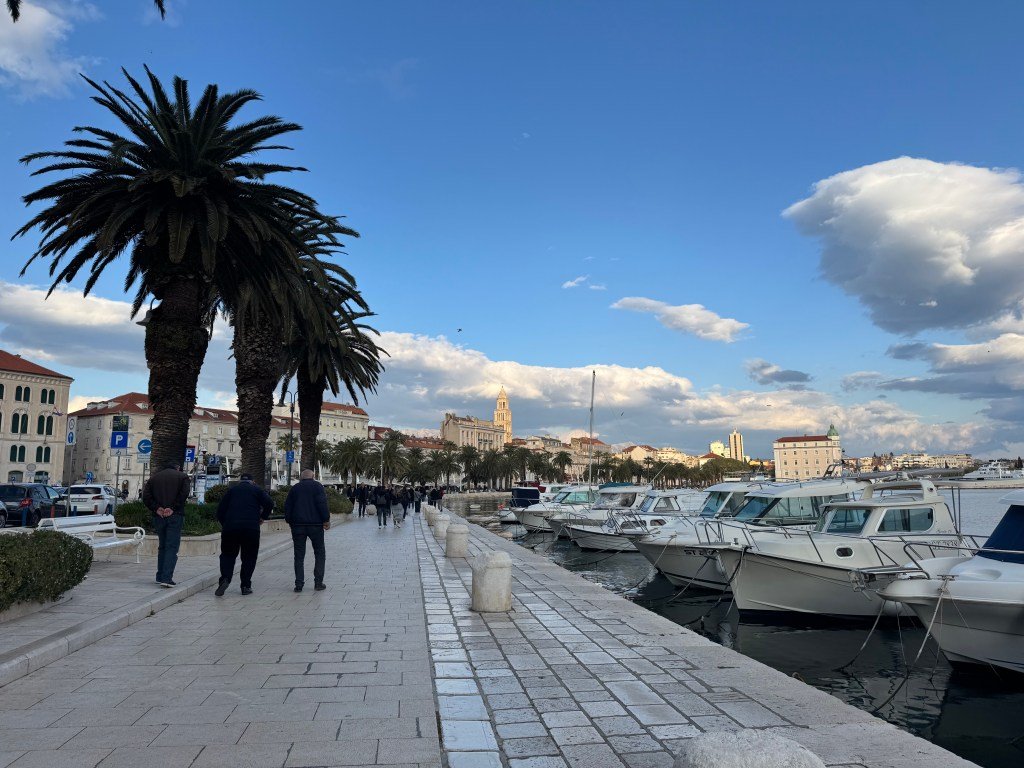
“Have you considered Croatia?” I asked a friend recently who said she is planning a trip to Portugal this fall.
It was a bold alternative and an itinerary zigzag, but one I wanted to suggest after vacationing in both countries. Croatia has all the advantages that Portugal (and Spain and Italy as well) boasts: coastline, cuisine and viticulture. Plus there’s amazing history, jet-setting locations, regional festivals and island-hopping to boot.
I spent a week exploring the central Dalmatia coast earlier this year on a travel invite from the Croatian National Tourist Board. It was my second visit to the country. The first was about a decade ago on a family trip with two teenagers and my husband. Tourism has changed significantly in the years between both trips — Croatia is much more popular today, especially with the cruise-ship clientele — but the country is still one of my top recommendations for a European destination. Here’s a look at the land.
History Lesson
First a bit of history about Croatia. Under Roman rule, the area was called Dalmatia until it became its own kingdom in 925. Over the centuries, it experienced a number of conquests, mergers and name changes, most recently becoming part of Yugoslavia in 1918 after the collapse of the Austria-Hungry alliance at the end of World War I.
After World War II, it continued to be part of socialist Yugoslavia, but in 1991, Croat forces that had declared independence from Yugoslavia fought against the Serb-controlled Yugoslav People’s Army and local Serb forces for secession in the Croatian War of Independence. As that war started, the adjacent lands of Bosnia and Herzegovina, Slovenia and Macedonia also seceded, effectively ending Yugoslavia as a nation. In 1995 (just three decades ago), Croatia emerged with its independence and defined
borders, but was heavily damaged economically and physically from the war.
Modern-day Croatia is considered part of the Balkan Peninsula and is comprised of four regions: Dalmatia is the largest and is along the coastline, but there’s also Croatia Proper, which includes the capital Zagreb, along with inland Slavonia and the most northwestern region of Istria. Despite the growing interest in the destination, there are no direct flights from the Twin Cities (yet). In fact, Visit Croatia reports that there’s only one direct flight to the entire country, and that’s out of New York. Most Minnesota flights into Zagreb or other popular sites, including Split and Dubrovnik, connect through Amsterdam.
On my first visit to Croatia, we started in Italy and drove the entire Adriatic Sea coastline, beginning in Venice with stops in Slovenia and the tiny 12-mile slice of Bosnia and Herzegovina called the Neum corridor, which touches the water north of Dubrovnik. Since that first visit, the Peljesac Bridge opened in 2022 to bypass Bosnia and quickly connect Split and Dubrovnik. Friends who visited Croatia last summer said they wanted to enjoy the entire coastline and took the bridge for scenic views, but I was excited to stop for a pizza lunch in Bosnia back in the day and add it to the countries I had visited (albeit for only a few hours).
Speaking of coastlines, one oddity about Croatia is its lack of a robust train service, which is a common way to explore other European countries. Some buses criss-cross the country, but most visitors choose to rent a car to explore the sights and sites at their leisure. For people not comfortable driving in foreign countries, the transportation limitations may be frustrating or expensive if they choose to hire a driver.
Another option is to explore by boat, which is what a different friend is planning to do this fall. She and her family are renting a catamaran for almost two weeks to sail the coast and visit Croatia’s islands, including Hvar, Brac and Korkula. Visitors arriving by cruise ship likely will have port calls in Split and Dubrovnik and will need to arrange a rental car or ride-share if they want to explore the country beyond the coastal areas.
Croatia was once an amazingly affordable country with its own currency, the kuna, as it slowly recovered from the war. During our first visit, we paid $28 for last-minute rooms on a boat hotel in Rijeka and less than $20 for private rooms in a family home advertised on a handmade sign near Split. Today, you’ll need more than good luck to find those alternative and cheap lodging options. Prices soared after Croatia started using the euro in 2023, a tourism official told me, making it difficult for some residents to maintain the standard of living they had finally established after the dissolution of Yugoslavia.
Still, short-term rentals and campgrounds supplement hotel chains for lodging options that range from budget to luxury-plus. During my visit this year, construction crews along the coast from Split to Brela were busy building apartment buildings and hotels as close as possible to the beaches and marinas.
Zagreb to Split
Croatia is a narrow country, approximately 3,500 miles long, which makes starting in the north and heading south along the Adriatic coastline – or reversing the order – a straightforward itinerary. But that doesn’t take into account the nearly 1,200 islands and reefs that dot the journey and make for ideal day trips on ferry rides or chartered boats.
Budget-friendly in-country flights can help save on travel time, too. The same friends who drove the country last summer decided to drop off their rental car in Dubrovnik and fly one-way back to Zagreb, amused to be on the same cramped flight with the exceptionally tall members of the Croatian men’s basketball team.
My suggested itinerary is to start in Zagreb. The metro area of about 1 million people feels modern and lively, despite its millennium-old history. The central square, called Ban Jelacic Square, is a popular hot spot with cafes and shops and monuments. The Museum of Broken Relationships is a quirky attraction for those who like oddities and Atlas Obscura spots, while the Zagreb Cathedral is worthy stop for travelers who like to visit the many, many European churches.
From Zagreb, make the three-hour drive to Plitvice Lakes National Park for some breathtaking scenery, amazing waterfalls and moderate hiking. The 115 square miles of park feature 16 cascading lakes that change in color from radiant turquoise to emerald
green to flat grey based on the mineral deposits within them. In some areas, the vibrant blue water is clear enough to see the lake bottom and the fish and vegetation living underneath the surface. We spent a full day exploring the park’s wooden walkways and designated hiking trails as well as taking a boat ride to view some of the tallest waterfalls. Be aware, however, this UNESCO World Heritage site (and Croatia in general) has been “discovered” and is very crowded throughout the year.
Overtourism throughout Croatia was the focus of several news stories earlier this year and the Croatian National Tourist Board reported record-breaking tourism numbers in 2024 with over 21.3 million arrivals and 108.7 million overnight stays. Visiting during the off-season is an option, although I found several shops, restaurants and hotels are closed then.
Split and Surroundings
From Plitvice, travelers can head west to Zadar, the oldest continuously inhabited city in Croatia and often overlooked as a destination, or southwest to Split, the second most populous, like we did. Both are on the Adriatic Sea. Split is a must-visit for all itineraries in Croatia. Skipping it would be like going to France but bypassing Paris.
Although Split was originally founded by the Greeks nearly 2,500 years ago, it’s the Roman ruins that Emperor Diocletian built in the 4th century as his retirement palace that dominate the city’s Old Town region. The attraction is called Diocletian’s Palace and it’s a sprawling maze of streets enclosed by stone walls and massive gates across several city blocks. Inside, the fortress is packed with fascinating cellars, churches, alcoves and open-air architecture. The UNESCO World Heritage site (yes, yet another one) offers shops, attractions, restaurants and history – with residents still living full-time inside the motor-free fortress.
The best way to explore the palace is to hire a guide who can explain the history and the mysterious back alleys and hidden gems. Plan on at least four hours of walking, with time to stop for a meal or shopping. You can explore some areas for free on your own, but on my multiple visits, I found that paying for entry to the private areas offered more insight. We made sure to take photos of the halls where episodes of “Game of Thrones” were filmed and marveled at how advanced the construction of the palace was for that era. Grab a fresh seafood dinner, a glass of Croatian wine or an indulgent gelato inside the palace walls or outside along the Riva,
or waterfront promenade.
Atlas Obscura fans should be sure to rub the big toe of the Gregory of Nin statue and don’t miss Froggyland, a quirky yet fascinating museum dedicated to taxidermied frogs in 21 different dioramas. It’s small, but remarkably detailed, with hundreds of stuffed frogs arranged in various daily-life activities. My favorites were a circus scene and a courtroom trial.
Split makes for an excellent home base for day trips, and we took several this spring. A quick 30-minute drive to the north is Trogir and its historic walled city center that feels a bit like Diocletian’s Palace on a smaller scale. We spent a few hours exploring the winding stone streets, as well as the Cathedral of St. Lawrence and its famous intricately carved door finished in 1240 by Croatian architect and sculptor Master Rodovan and his apprentices.
A different day, we traveled an hour south for an overnight stay in the tiny town of Brela, famous for a seashell-white pebble beach, local lavender farms and the Biokovo Mountain Nature Park. We ate dinner at Konoba Feral (it was so good we returned a second night) and admired the creative cuisine, including the shrimp black risotto, daily fresh catch and panna cotta dessert.
Later, we drove from Brela about an hour to inland Sinj, a tiny gem of a town immensely proud of its history. More than 300 years ago in 1715, the townspeople stopped an advancing Ottoman Empire in an underdog battle. To commemorate, the town holds a knights’ tournament called Sinjska Alka that attracts people from across Europe every first Sunday of August. A modern, interactive (and thankfully air-conditioned) museum in the heart of the town educates visitors about the original battle and the annual equestrian festival with a 20-minute film, full-size armored soldiers on horseback and rooms upon rooms of costumes and weapons. Sinj struck me as one of those places famous for one large community event — like Pamplona and its running of the bulls. It is also easy to overlook because it’s not on the cruise-ship circuit or along the main highway.
Another location worth the drive but not on most itineraries is Imotski, on the other side of Biokovo Mountain from Brela. Here, we hiked around the Blue and Red Lakes (technically sinkholes), both aptly named for their topography. The Blue Lake was a
striking, shimmering turquoise blue while the Red Lake is named for the steep red cliffs surrounding it and not for the color of the water deep inside.
Destination Dubrovnik
Finally, the southern-most must-see along Croatia’s Adriatic Sea coast is the city of Dubrovnik. “Game of Thrones” fans will instantly recognize those medieval city walls, which we walked along one hot summer day on my first visit to the country. As the setting for “GoT”’s King’s Landing, Dubrovnik offers Instagramable stops at every turn.
When we visited, the city was starting to become popular, but not so overcrowded that it was difficult to navigate. We stayed several nights outside the gates of Old Town and knew to avoid the main sites along the stradun — or main pedestrian street — during the day when the cruise ships docked.
Instead, we took the cable car to the top of Srd Hill for a panoramic view one afternoon and lounged on the beach outside those medieval walls another day. Then we returned to the Old Town at dusk to discover a memorable pizza with a fried egg on top at Pizzeria Mirakul followed by a visit to the famous Buza Bar precariously stacked along the outer wall right above the sea.
Croatia is also famous for its island hopping, which, unfortunately, I haven’t yet experienced. We were scheduled to take the ferry from Markarska to Brac Island this spring, but the winds were too strong for safe ferry passage. I was a bit worried about
getting seasick on the ferry, so was a bit relieved to explore Markarska instead. Korčula and Hvar Island are two of the most popular destinations with ferry rides from both Dubrovnik and Split. Korčula also is a medieval walled city and known as the birthplace of Marco Polo, while Hvar has wineries, beaches and upscale dining and shopping.
I’m not sure yet if I convinced my friend to alter her plans and visit Croatia instead of Portugal this fall but I was able to offer some suggestions to the friend renting the catamaran. She messaged me this spring after seeing some of my social media posts
from Croatia and we met for dinner to discuss. I’m confident she’ll find Croatia as charming as I do.
Wines of Croatia
Many parts of Europe are known for their award-winning wines, particularly France, Italy and Spain. But few may know the role a Croatian played in putting California wines on the map and his impact in his home country’s viticulture. Miljenko “Mike” Grgich is a national hero known for escaping his poor upbringing as the son of winemaker in Croatia by eventually landing in Napa Valley, California, where he created the 1973 Chateau Montelena Chardonnay. That varietal shocked the world when it won the Judgment of Paris blind tasting in 1976. The 2008 movie “Bottle Shock” is a fictionalized comedy of the event that stars Alan Rickman and Chris Pine but fails to credit Grgich’s contributions. Grgich ran Grgich Hills Estate in California until 2018 and
died in his sleep at age 100 in 2023.
As part of my hosted trip to Croatia this spring, I was invited to attend the Dalmatian Wine Festival in Split to learn about the various wineries operating in the region. Grgich was a native of Desne, in Dalmatia, and his name was cited often as inspiration. Pošip is the area’s take on Chardonnay, while Plavac Mali is a popular red varietal. I sampled nearly 50 types and labels over the two-day festival and was also treated to samplings at the Hvar Hills and Markus tasting rooms in Split and a gourmet lunch with wine pairings one afternoon at Kastel Sikuli vineyard outside of Split. Although most Croatian wines aren’t yet distributed in the United States, some Twin Cities restaurants are starting to add these labels to their menus. Or do as my friend is planning this fall and schedule a day of wine tastings and vineyard visits as part of a trip to Croatia.
Destinations & Things To Do
Starting the GR21 – The Trek
Preparing to Leave Paris
After finishing up a crazy week of a wedding (честитам Јована!) and seeing tons of family, I am finally prepped for the GR21! I had so much fun with my family, but the logistics of a wedding can always be slightly nerve wracking. The group of us who flew in had an extremely limited understanding of french which made it hard to get to know the groom’s family, but we made due!
Once we came back to Paris, I, along with my mom and siblings, went to Versailles for the day. Super cool, albeit very crowded for those who might be into thru hiking. After that, we came back to Paris and I went grocery shopping. I love finding hiking food in countries I have never hiked in because 1) I have a nut allergy, which usually makes it an insane puzzle to find good, lightweight protein and, in general, calorically dense energy sources 2) all the distributors are different, so sometimes the hiking diet is simply completely different than the states would be. I ended up buying some bag meals and apples for familiar foods, but then also purchased these little cured meat bites. They are certainly interesting in taste, but they are really salty which I hope will help with electrolyte balance and they seem like a great source of protein that I can carry unrefrigerated.
Packing made me realize I may have bought too much food for my trip. The GR21 passes through many small villages and even cities, so I was planning to stop for a meal/drink at least once a day to charge my phone/battery pack and plan the rest of the day. So I could very well be left with extra food by the end of the trail. Thankfully I will be moving onto a trail after this, so I can just carry it over! (Thinking now about having to eat all the cured meat bites, because I have no idea if I can bring them into the UK on a flight…)
Heading Out
I plan to hike the GR21 from East to West. That means I’ll be stopping in Le Treport to find the Eastern terminus and begin my hike. I’m definitely feeling the nerves set in, but for a more introverted person like myself, the difficulty of simply walking, camping, and cooking bagged dinners is far less stressful than meeting a swarm of people for the first time and not being able to speak with them. I certainly wouldn’t say I lie in the camp of the extremely introverted, I just lean that way. So speaking with one or two people at a time actually feels really nice, but a crowd always drains me. So as much as a wedding is fun, exciting, and comfortable in terms of the amenities provided, I’m very excited to get on the trail and finally relax. (I definitely think there will be some who agree, but many who will disagree that time on trail is ‘relaxing’)
There’s a poem called Rabbitbrush by Molly McCully Brown (which you should absolutely go read) that reads: “I should be afraid / to be so unprepared: heardless / human.” It’s been one of my favorite poems for a while now. All us heardless humans walking trails across the planet should feel afraid. But the most beautiful thing is that through overcoming that we build heards on trails in tramlies, or stumble upon hiking partners, or exchange stories with the others in a hut or at a coffee shop in town. I may have not thru hikes before, but I have been on plenty of backpacking trips and hikes where I have joined or helped make a transient heard that passes through nature, onto our next adventure. A cycle of becoming heardless and finding a heard to build the richness of connection in our lives. I’m excited once again to become heardless and find a heard again, and again, and again.
This website contains affiliate links, which means The Trek may receive a percentage of any product or service you purchase using the links in the articles or advertisements. The buyer pays the same price as they would otherwise, and your purchase helps to support The Trek’s ongoing goal to serve you quality backpacking advice and information. Thanks for your support!
To learn more, please visit the About This Site page.
-

 Brand Stories3 weeks ago
Brand Stories3 weeks agoBloom Hotels: A Modern Vision of Hospitality Redefining Travel
-

 Brand Stories2 weeks ago
Brand Stories2 weeks agoCheQin.ai sets a new standard for hotel booking with its AI capabilities: empowering travellers to bargain, choose the best, and book with clarity.
-

 Destinations & Things To Do3 weeks ago
Destinations & Things To Do3 weeks agoUntouched Destinations: Stunning Hidden Gems You Must Visit
-

 Destinations & Things To Do2 weeks ago
Destinations & Things To Do2 weeks agoThis Hidden Beach in India Glows at Night-But Only in One Secret Season
-

 AI in Travel3 weeks ago
AI in Travel3 weeks agoAI Travel Revolution: Must-Have Guide to the Best Experience
-

 Brand Stories1 month ago
Brand Stories1 month agoVoice AI Startup ElevenLabs Plans to Add Hubs Around the World
-

 Brand Stories4 weeks ago
Brand Stories4 weeks agoHow Elon Musk’s rogue Grok chatbot became a cautionary AI tale
-

 Brand Stories2 weeks ago
Brand Stories2 weeks agoContactless Hospitality: Why Remote Management Technology Is Key to Seamless Guest Experiences
-

 Asia Travel Pulse1 month ago
Asia Travel Pulse1 month agoLooking For Adventure In Asia? Here Are 7 Epic Destinations You Need To Experience At Least Once – Zee News
-

 AI in Travel1 month ago
AI in Travel1 month ago‘Will AI take my job?’ A trip to a Beijing fortune-telling bar to see what lies ahead | China

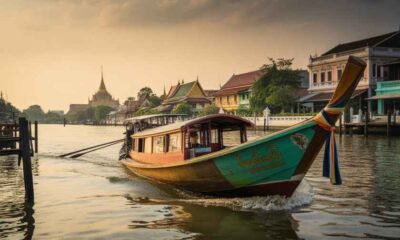

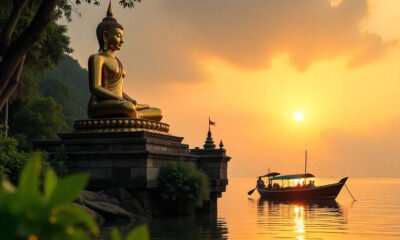

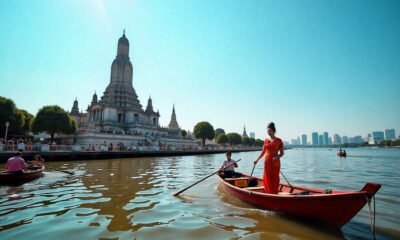

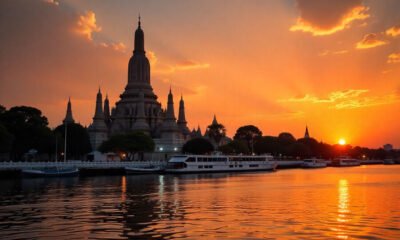





You must be logged in to post a comment Login